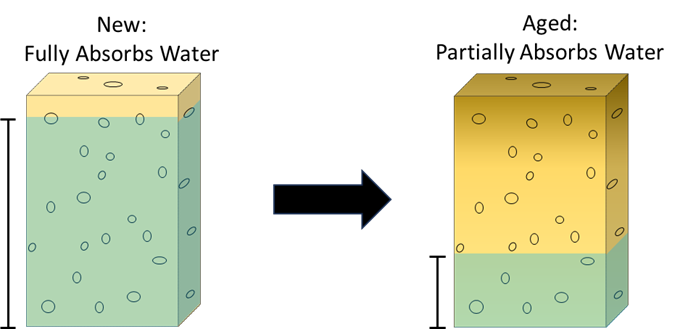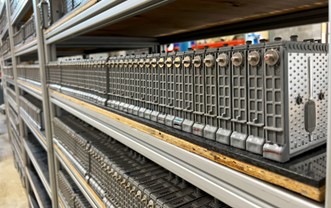What are the differences between nickel metal hydride (NiMH) and lithium-ion (Li-ion) batteries? It helps to think of the sponge analogy for a battery. In this simplified analogy, both types of batteries are sponges that get charged with water. As you squeeze the sponge, it discharges, releasing water. When you put water into the sponge, it recharges, filling up with water again. Since we are concerned with refurbishing batteries, we like to look at ways these sponges fail. After using a sponge hundreds of times, it can start to wear down and hold less water. This is true of batteries, too, since they often fail due to deep cycling.
In NiMH batteries, there is what is called the “memory effect.” Imagine only using the sponge to soak up a small amount of water every time. The rest of the sponge never hydrates and dries up, losing some of its effectiveness. Eventually, the sponge “forgets” it can soak up more water. In hybrid vehicles, the electric motor and regenerative braking partially discharge and recharge the batteries. During a typical commute, the battery may experience dozens of partial discharge and recharge cycles. The reconditioning process takes the stiff sponge and reworks it, so it is loose and can hold water again.

In Li-ion batteries, there is no memory effect. Li-ion batteries are more commonly discharged and charged to full capacity. However, even in cases where they don’t discharge fully, they still don’t display a memory effect. Instead, Li-ion batteries exhibit different modes of failure: anode delamination and formation of dendrites.
With anode delamination, the negative side of the battery slowly pulls apart on a microscopic scale after many cycles. Using the previous analogy, imagine the sponge starting to flake apart after using it for months and months. With the formation of dendrites (small fibers), you can think of it as water sitting in the sponge slowly making mineral deposits and clogging up the little pores inside, stopping the sponge from flexing. Both issues are difficult to address and A3 Global is working on an electrochemical process to identify and remedy these failure modes. Some of the newer lithium iron phosphate batteries reportedly display a memory effect which we are investigating.

When rebuilding a battery pack, the process for NiMH batteries and Li-ion batteries are similar, with some key differences. In Li-ion batteries, the battery pack still has several modules inside, and each module has cells inside. Since there is no observable Li-ion memory effect, the LVc40 system will quickly diagnose each cell/module based on our proprietary SOH (State of Health) parameters. Cells that are deemed unusable will be sent to recycling, like NiMH, and good cells are rebuilt into a balanced battery pack. In some cases, like the Nissan Leaf battery pack, the cells are sealed inside the module, so we must diagnose the entire module rather than the individual cells. Either way, we can save part of it instead of potentially wasting the battery pack. This is especially helpful for li-ion batteries since they are difficult to recycle and many EV owners consider their vehicle’s impact on the climate. A3 Global is committed to continuing to investigate Li-ion batteries and remedy their failure modes.
To learn more about hybrid and EV batteries, join our coming free webinar “NiMH vs. Li-ion batteries: How they are used in hybrid and electric vehicles” on Thursday, July 20th, 2023 at 1 PM ET. Register here.



